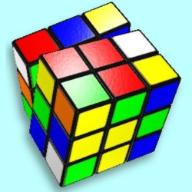What is the maximum number of possible outcomes when 3 dice (6 sides) are thrown at the same time?
2016-01-23 4:10 pm
回答 (5)
2016-01-23 4:12 pm
Each die has 6 possible outcomes.
6 x 6 x 6 = 216 outcomes
6 x 6 x 6 = 216 outcomes
2016-01-23 4:16 pm
3 through 18
16 different numbers
16 different numbers
2016-01-24 1:16 am
6x6x6=216 outcomes
2016-01-23 4:16 pm
If the dice all colored differently, there are 216 distinguishable outcomes.
If the dice are indistinguishable, the distinguishable outcomes are:
(6+5+4+3+2+1) that include one or more 6's;
(5+4+3+2+1) that include no 6's but one or more 5's;
(4+3+2+1) that include no 6's or 5's but one or more 4's;
and then 3,3,3; 3,3,2; 3,3,1; 3,2,2; 3,2,1; 3,1,1;
2,2,2; 2,2,1; 2,1,1; 1,1,1;
so 21 + 15 + 10 + 10 = 56 distinguishable outcomes.
The number of different sums is 18, 17, 16...down to 3,
so a total of 16 distinguishable sums.
If the dice are indistinguishable, the distinguishable outcomes are:
(6+5+4+3+2+1) that include one or more 6's;
(5+4+3+2+1) that include no 6's but one or more 5's;
(4+3+2+1) that include no 6's or 5's but one or more 4's;
and then 3,3,3; 3,3,2; 3,3,1; 3,2,2; 3,2,1; 3,1,1;
2,2,2; 2,2,1; 2,1,1; 1,1,1;
so 21 + 15 + 10 + 10 = 56 distinguishable outcomes.
The number of different sums is 18, 17, 16...down to 3,
so a total of 16 distinguishable sums.
2016-01-23 4:15 pm
There are 14 possible outcomes, in terms of the final result... but the outcomes closer to the middle (9-12) are substantially more likely.
This is assuming that we are only concerned with the final count... that a dice roll of 3-6-4 is the same result as 6-5-2, for example...
This is assuming that we are only concerned with the final count... that a dice roll of 3-6-4 is the same result as 6-5-2, for example...
收錄日期: 2021-04-21 16:28:19
原文連結 [永久失效]:
https://hk.answers.yahoo.com/question/index?qid=20160123081043AA9lLxd

